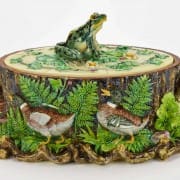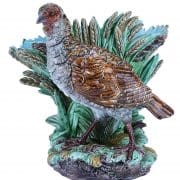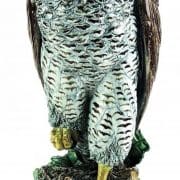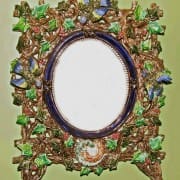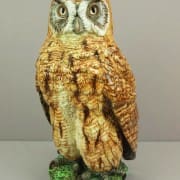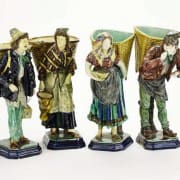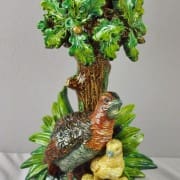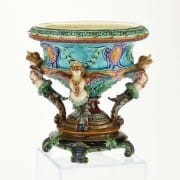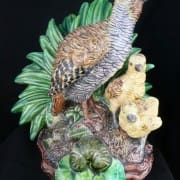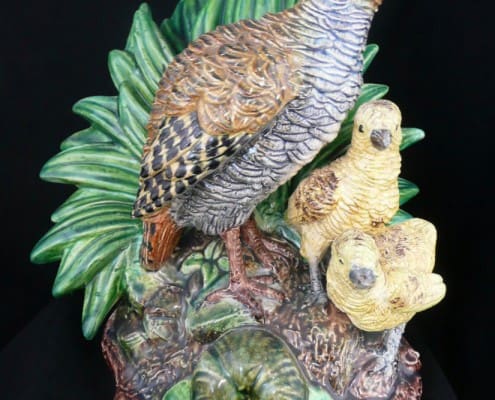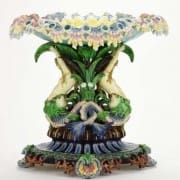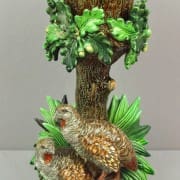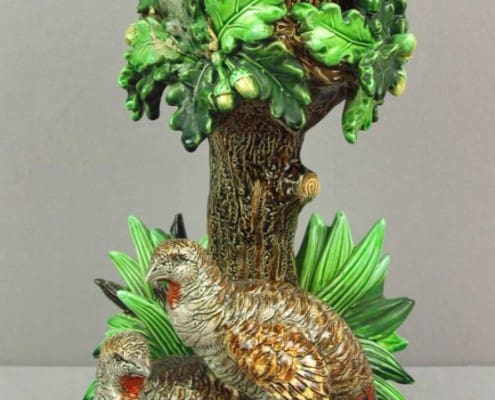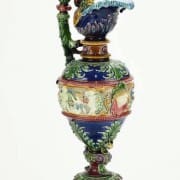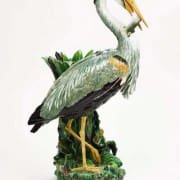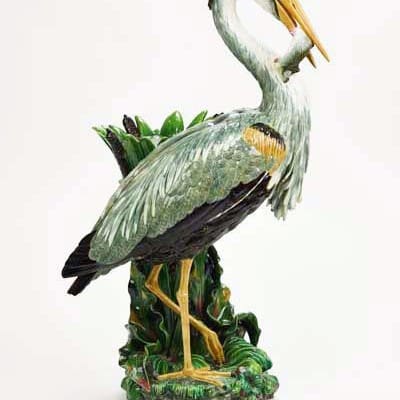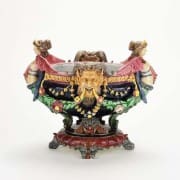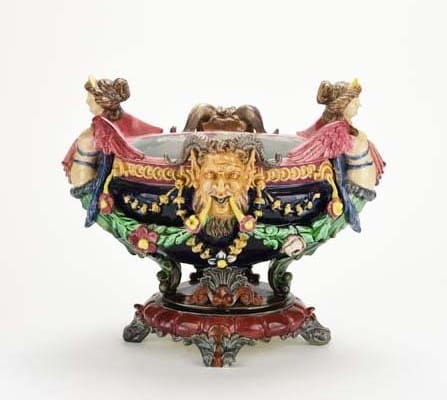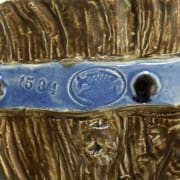Hugo Lonitz
Unlike many of the prominent English and French majolica manufacturers, not much is known about Hugo Lonitz and his factory that was located in Neuhaldensleben, Germany. It has been assumed that since Neuhaldensleben (now known as Haldensleben) was located in East Germany, much of the factory and factory records were bombed into oblivion or lost during World War II. It has been recorded, however that Lonitz operated his factory in Neuhaldensleben from 1868 to 1886 with moderate success. Due to increased demand for majolica, the Lonitz factory underwent a restructuring in 1886 and was in production until the factory closed in 1904 due to financial difficulties.
During the factory’s heydey, it was reported that Lonitz employed as many as 40 people and expanded his showrooms to include locations in Australia. Although Lonitz produced tableware, household utilities, and small collectibles, his factory is best known for its production of naturalistic majolica pieces, often produced in lifelike size and detail.
Lonitz exhibited at several of the 19th century world exhibitions, including the 1876 International Exhibition in Philadelphia. A descriptor in the United States Centennial Commission Reports and Awards Exhibition catalogue from that period describes Lonitz’s majolica as follows:
“Hugo Lonitz, Neuhaldensleben; near Magdeburg, Prussia. Exhibits a collection of animals and animal heads—some of them life-size, for wall and other decorations, as horses, dogs, deer, wild boar, etc.; yellow terra-cotta body of moderate hardness, painted in natural colors and fired at a low temperature. Some of these are artistically modeled and expressive, and colored with judgment. “
Lonitz took much inspiration for many of his naturalistic majolica pieces from Black Forest carvings that were popular in Europe in the second half of the 19th century. Like the best Black Forest carvings of this era, Lonitz’s earth toned majolica studies depicted lifelike detail so realistically that observers often have to look twice to ensure the piece hasn’t come to life.
The recognized mark of Hugo Lonitz is formed by two fish enclosed within an oval. The mark may be accompanied by an impressed pattern number.
Photo Credits:
Strawser Auctions
Live Auctioneers
Ebay images
Madelena Antiques
Antiques from Trilogy
Philppe Meunier & Juan-Alonso Defrocourt
Karmason Library

